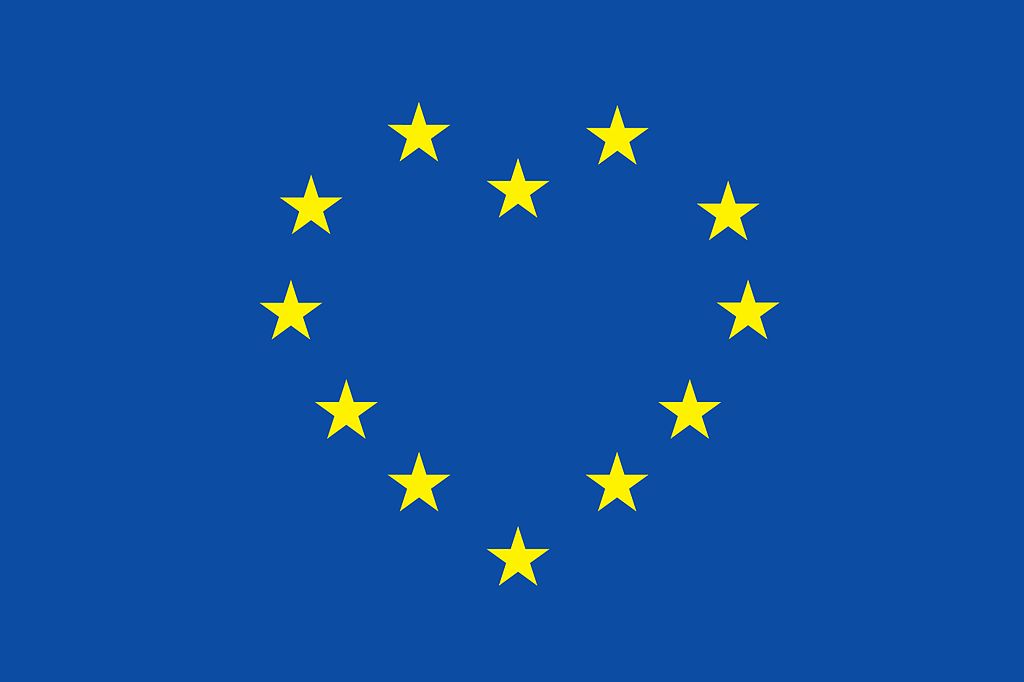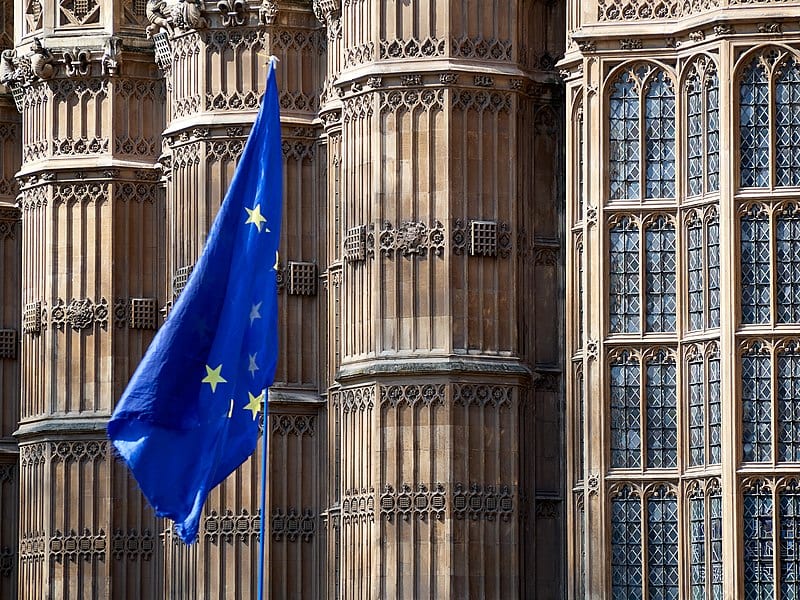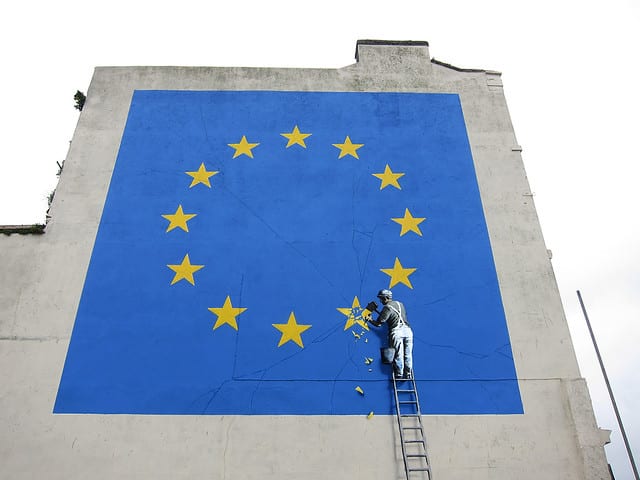
In the UK, the Union Jack flag has long been an ambiguous form of identity expression. Its forays into visual culture can be seen as light-hearted and harmlessly patriotic—think David Bowie’s iconic Alexander McQueen jacket, or Geri Halliwell’s signature mini dress—or, like Morrissey’s performance in Finsbury in 1992, can be interpreted as a dangerous flirt with fascism. Just recently, in her video The Lion and the Unicorn, Scottish artist Rachel Maclean used the flags of Scotland and the UK to illustrate the tensions within this supposedly united island.
A flag acts as a visual stamp, marking a place off as distinct and putting a logo to national identity. However, while the appearance of national flags in visual culture may often spark division, the European Union flag was designed precisely to avoid this. After the devastation of two world wars in quick succession, Europe sought unity and unanimity in the hope of preventing future bloodshed. Recognising the power of a mutual motif, the countries of Western Europe sought a symbol for their shared political project, rejecting hundreds of designs until one was approved by all the member countries of what was then The Council of Europe. Perhaps the only time the countries of the EU managed to reach a unanimous agreement on anything, in 1955, a design proposed by technical artist Arsène Heitz was approved.

“The circle of twelve stars embodies the idea of union, of many parts making up a single whole, with twelve being seen as the perfect number”
The appearance of the flag itself is fairly underwhelming. Stars on a blue background do not a unique flag make—just ask the United States, Australia, or New Zealand. In fact, it’s technically not even a flag, but rather a “logo” that just happens to be “eligible to be reproduced on rectangular pieces of fabric”… so kind of like a flag then? And even though journalist Michael Hobbes claims that blue was chosen, not for any special meaning or reason, but “basically because every other colour was taken,” the design still makes claims of profound symbolism.
The circle of twelve stars embodies the idea of union, of many parts making up a single whole, with twelve being seen as the perfect number. Twelve months, twelve hours to the clock, twelve apostles, twelve hues in the colour wheel—all of these groups are made up of a whole much greater than the sum of its parts. The loss of any individual element would render the whole incomplete and obsolete; what would be the point of a clock with, say, the number three missing?

“Unity, solidarity and harmony” are the values that the EU flag represents, according to the Union’s own website, but that’s not what the image conjures up in the UK at the moment. For years, many people in Britain would have been unable to picture the EU flag, and certainly wouldn’t have seen it as an emblem of divisive identity; as a visual symbol it just didn’t have the cultural impact. However, since the 2016 vote to leave the EU, the flag has become an emblem of controversy for Britain. In the wake of the UK’s Brexit vote, the EU flag has—perhaps inevitably—been adopted as a symbol of identity for many of those who voted to remain, while its rejection is celebrated by those who sought to leave the European Union.
It is this new division, and its resulting opposing identities that has brought the emblem so strongly into the British consciousness, and into its visual culture. Banksy’s 2017 Brexit Mural depicts a workman painstakingly chipping away at one of the stars, fracturing the circle’s unbroken unity. A source of its own individual controversy, the mural has disappeared just this weekend
, with no one entirely sure whether this is the result of vandalism or a secret sale.

“For years, many people in Britain would have been unable to picture the EU flag, and certainly wouldn’t have seen it as an emblem of divisive identity”
Fashion is a telling indicator of when an emblem becomes part of visual and personal identity, and suddenly the EU logo is everywhere, from the catwalk to streetwear
. Some even interpreted the Queen’s outfit for her June 2017 speech as subtle support for the UK maintaining a European identity. Paradoxically, it is only as the country is about to leave the EU that the flag of Europe has become a strong beacon of identity in Britain. Sadly, for an emblem that sought to symbolise unity, it has come to represent a new breach in UK shared identity. Now, despite the the EU’s best original intentions, there is a new “us” and “them”.





